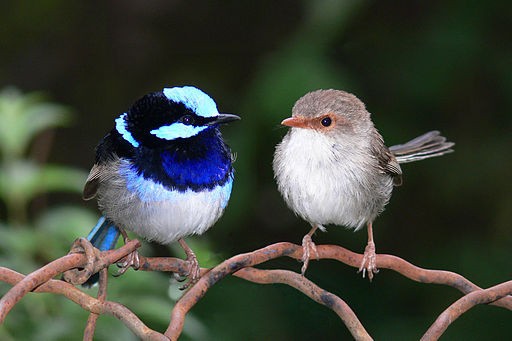
In humans, it is often said that our society is obsessed with sex, and many people even use sexual references to sell everything from fragrances to cars. However, from the viewpoint of evolutionary theory, sex is not the most efficient way of reproducing. As a matter of fact, scientists have been asking for decades why sexual reproduction even exists.
Sexual Versus Asexual Reproduction
If the goal of life is to spread the genes of an organism far and wide, then asexual reproduction seems to have the advantage. This is due to the fact that species would not have to invest time and energy finding a potential partner.
Aside from this, asexual organisms can also pass on their genes twice as fast as those reproducing sexually, since they pass on all their genes and only their genes. In sexual reproduction, half of the genes that are passed down to the next generation are from the other parent, so the offspring can lose some of the genetic traits that made each parent successful.
There are many hypotheses but little hard evidence regarding the advantages of sex. They stem from the assumption that the genetic variation resulting from sexual reproduction is worth the cost. In some environments, that variation could give a competitive advantage over asexual organisms, which can spread their genes more efficiently but vary little from one generation to the next.
READ ALSO : Asexual Reproduction Doubles the Risk of Having Harmful Genetic Mutations, Study Reveals
The Red Queen Hypothesis
The Red Queen hypothesis refers to the idea developed by biologists to explain the "evolutionary arms race," which encourages the evolution of species. When it comes to natural selection, organisms need to adapt constantly in order to survive competition and hostile enemies that are constantly evolving.
This idea was first described by Leigh Van Valen in 1973 who called it a "new evolutionary law". The name for the hypothesis is a reference to a conversation between Alice and the Red Queen in Lewis Carroll's book "Through the Looking-Glass". In this conversation, the Red Queen states: "Now, here, you see, it takes all the running you can do, to keep in the same place."
Valen explained that organisms do not evolve independently in order to fit into their surroundings, but also to co-evolve with other species. It seems that evolution will still take place since organisms need to adapt continuously just to keep up with their enemies in the fight for resources.
It suggests that in order for a species to maintain a particular niche in an ecosystem, it must constantly undergo adaptive evolution because the species with which it is coevolving are undergoing adaptive evolution themselves. This hypothesis argues that sexual reproduction persists because it allows a lot of species to rapidly evolve new genetic defenses against parasites that attempt to live off them.
In Rutgers University, scientists tested this idea by observing various groups of small fish known as topminnow in Mexico. Some populations of this fish reproduce sexually, while others reproduce asexually. This organism is under constant attack by a parasite, a type of worm which causes black-spot disease.
The research team found that the "clones" or identical populations of the asexual topminnows acquired many more black-spot worms than those that reproduce sexually. Compared to the asexually producing clones, the sexual topminnows seem to devise new defenses faster through recombination.
RELATED ARTICLE : Long-Term Asexual Reproduction Discovered for the First Time in a Prehistoric Species
Check out more news and information on Evolution in Science Times.
© 2025 ScienceTimes.com All rights reserved. Do not reproduce without permission. The window to the world of Science Times.











